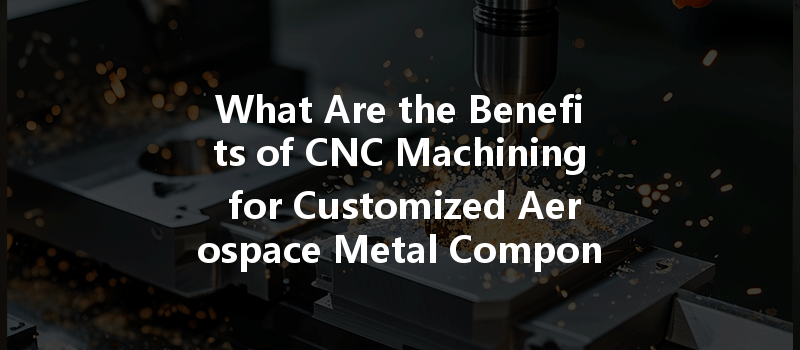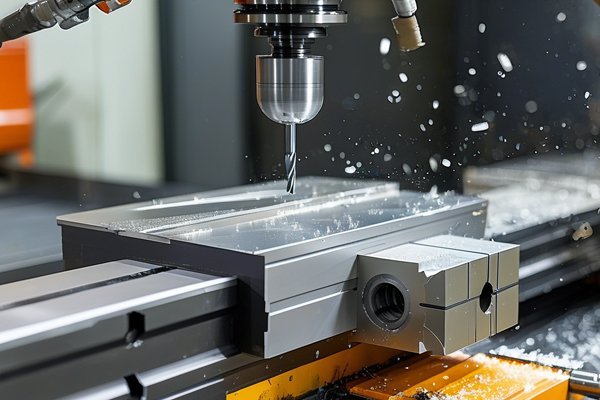Did you know that the global aerospace manufacturing market is expected to surpass $600 billion by 2025? As aviation technologies continue to evolve and the push for lightweight, durable materials grows stronger, the demand for high-precision components has never been higher. This is where CNC (Computer Numerical Control) machining shines, particularly for the creation of customized aerospace metal components.
In this blog, we will delve deep into the benefits of using CNC machining in the aerospace industry, offering detailed insights on its applications, advantages, and the technologies shaping its future.
Understanding CNC Machining
CNC machining is a subtractive manufacturing process that utilizes pre-programmed computer software to control machinery and tools. This technology enables the efficient production of precise components across various industries, including aerospace, automotive, and medical fields.
How CNC Machining Works
Why CNC Machining is Crucial for Customized Aerospace Metal Components
The aerospace industry is characterized by stringent regulations, requiring parts that not only meet but exceed safety and performance standards. Here’s a deeper look into the benefits of utilizing CNC machining for this sector.
One of the most significant advantages of CNC machining is its ability to produce parts with outstanding precision. A dedicated CNC machine can achieve tolerances as tight as +/
In the aerospace sector, standard components often fall short of performance requirements. CNC machining allows manufacturers to create bespoke parts tailored to specific designs, materials, and weight considerations. Manufacturers can easily customize metal components, optimizing for factors like aerodynamics and structural integrity.
CNC machining can accommodate various metals commonly used in aerospace applications, including aluminum, titanium, stainless steel, and nickel-based alloys. Each material can offer different benefits, from lightweight options to high-strength solutions, and CNC machining provides the flexibility needed to work with these diverse materials.
With CNC machining, production can be incredibly fast. Traditional machining methods involve manual operation, which can be slow and prone to human error. CNC machines, on the other hand, can operate continuously and replicate the same process dozens of times without significant downtime. This not only speeds up production but also reduces costs in the long run.
CNC machining uses a subtractive method, where material is removed from a solid block to create the final part. This process is highly efficient, often resulting in reduced waste material compared to traditional machining techniques. In an industry concerned with sustainability, lower material waste can significantly lessen both =environmental impact and costs.
Aerospace components often feature intricate shapes that require advanced machining capabilities. CNC technology can efficiently produce complex geometries through 3D machining processes, which would be nearly impossible with manual methods. This allows for more innovative designs that can improve performance and efficiency.
Once a CNC program is established, the same design can be reproduced consistently across multiple parts. This consistency is critical for aerospace applications, where uniformity is necessary for reliability and safety.
CNC machining can easily integrate with other advanced production technologies, including additive manufacturing and 3D printing. This synergy allows for the development of hybrid components that can leverage the unique advantages of each process, resulting in enhancements in weight, strength, and functionality.
Applications of CNC Machining in Aerospace
CNC machining serves various functions in the aerospace sector, providing customized solutions for a range of applications, which can be categorized as follows:
CNC machining can manufacture vital structural components, such as brackets and frames, that provide support and integrity to the aircraft’s body. These parts often require a combination of lightweight materials and high strength, making CNC machining the ideal solution.
From turbine blades to casings, the demands for precision in engine components are acute. CNC machining allows engineers to create parts that can withstand extreme temperatures and pressures while maintaining high performance levels.

Cabin interiors, including custom fixtures and fittings, can also benefit from CNC machining. The ability to create lightweight, aesthetically pleasing designs helps improve passenger satisfaction and comfort without compromising safety.
CNC machining is fundamental in producing critical components like landing gear and control surfaces. These parts must meet specific safety and performance standards due to their direct impact on aircraft performance.
Rapid prototyping is another essential application of CNC machining. Engineers can quickly iterate on their designs, validate concepts, and refine specifications, aiding in the development of next-generation aerospace technologies.
Challenges in CNC Machining for Aerospace
While the benefits of CNC machining for customized aerospace components are evident, several challenges must be addressed to maximize its potential:
CNC machines, especially those equipped with advanced capabilities such as multi-axis machining, can be expensive. Businesses must weigh this initial investment against long-term gains from reduced production costs.
Effective operation of CNC machinery necessitates a well-trained workforce. Investment in training is crucial to ensure that staff can operate machines safely and efficiently, particularly for high-precision aerospace components.
Finding the appropriate materials for each specific application can be complex. Different components may require different material properties, and understanding the implications of these choices is essential for manufacturers.
While CNC machining excels in precision for small to medium production runs, high-volume manufacturing may sometimes require alternative methods, pushing manufacturers to optimize their workflows appropriately.
The Future of CNC Machining in Aerospace
As the aerospace industry continues to innovate, CNC machining will evolve accordingly. Some predicted trends include:
The application of AI and machine learning will enhance CNC machines’ efficiency, predictive maintenance, and overall performance. This advancement will enable continuous improvements in production processes.
More automated systems in CNC machining will be implemented to reduce human error and lower labor costs. Robotics, coupled with CNC technology, can significantly accelerate production and improve safety.
With the growing emphasis on sustainability in aerospace, CNC machining will evolve to focus on environmentally friendly practices, reduced energy consumption, and materials recycling strategies.
The conjunction of CNC machining with additive manufacturing will provide new avenues for increasing performance and reducing material usage, allowing for more complex designs and functionalities.
CNC machining has solidified its place as an invaluable method for producing customized aerospace metal components. With its precision, efficiency, and flexibility, it tackles the intricate demands of the aerospace industry while pushing the boundaries of design and innovation.
Understanding the advantages and applications of CNC machining can optimize production processes, improve quality and enhance overall safety standards—a winning trifecta for any aerospace manufacturer.
As we look to the future, it’s essential to remember that advancements in technology will only enhance the capabilities of CNC machining. It’s worthwhile for manufacturers to stay informed and consider how they can leverage these innovations to strengthen their positioning in the competitive aerospace market.
The case for CNC machining in aerospace isn’t merely a discussion of technology; it reflects a holistic approach to engineering that values safety, sustainability, and the relentless pursuit of excellence in the sky. Let this blog be a reminder of the importance of innovation and precision in an industry where every detail counts, and where the possibility for greatness is in the hands of those using cutting-edge techniques.
By embracing the future and capitalizing on CNC machining technology, we can continue to fly higher and achieve unprecedented feats in aerospace engineering.






